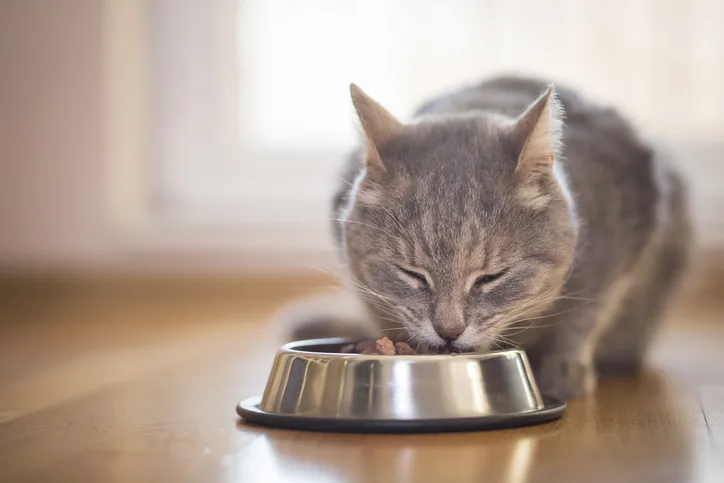
In the Literature
Schramm A, Kook PH. Evaluation of dietary histories in cats presenting with chronic gastrointestinal clinical signs to a veterinary teaching hospital. J Feline Med Surg. 2023;25(2):1098612X231154466. doi:10.1177/1098612X231154466
The Research …
Chronic GI disease is common in middle-aged to older cats.1,2 Nonneoplastic feline chronic enteropathies can be subclassified based on treatment response, including food-responsive enteropathy and corticosteroid-responsive idiopathic inflammatory bowel disease.1,2 Accurate dietary history is critical for choosing an appropriate new diet.
In this study, researchers evaluated the amount of dietary information available when cats with GI signs of ≥3-weeks’ duration were presented for first consultations at a gastroenterology (GE; n = 80) or general internal medicine (IM; n = 84) service at a university in Switzerland. Of the cats presented, 53% of GE service cats and 63% of IM service cats had been referred. Referral documents mentioned dietary history in 29% of GE and 8% of IM cats, and diet trial responses were recorded in 33% of GE and 75% of IM cats with an included dietary history. No cats received >1 diet trial prior to referral.
Dietary history was obtained during consultations with 76% of GE cat owners and 63% of IM cat owners. Only 61% of GE cat owners and 21% of IM cat owners were able to name the diet currently being fed. One author noted it was not uncommon to help owners identify the diet being fed by searching cat food packaging images online.
This study highlighted that a complete dietary history is often not obtained in general practice or referral settings.
… The Takeaways
Key pearls to put into practice:
Awareness of the importance of diet in cats with GI disease remains low among clinicians and pet owners. Selecting an appropriate diet and increasing diet trial compliance are difficult without a thorough dietary history.
Complete dietary history is often not obtained from cat owners, and the process of collecting this information is difficult when owners cannot name the diet currently being fed. In this study, ≤61% of owners were able to name the current diet. Obtaining dietary history requires time and patience, and clinicians may need to provide assistance (eg, via internet searches) to owners to help identify the diet being fed.
You are reading 2-Minute Takeaways, a research summary resource presented by Clinician’s Brief. Clinician’s Brief does not conduct primary research.